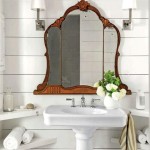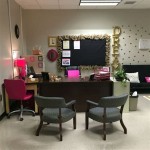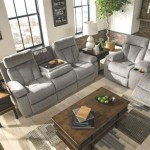Office Room Decoration
Office room decoration plays a crucial role in fostering a productive and positive work environment. A well-decorated office can boost employee morale, enhance creativity, and improve overall efficiency. Considerations for office decoration extend beyond mere aesthetics; they encompass functionality, employee well-being, and company branding.
The initial step in office room decoration involves careful planning. This includes assessing the available space, considering the number of employees, and determining the overall budget. Creating a floor plan is essential for optimizing space utilization and ensuring efficient traffic flow. The plan should delineate designated work areas, collaborative spaces, and common areas such as break rooms or reception areas.
Color psychology plays a vital role in influencing mood and productivity within the office environment. Different colors evoke different emotions and can be strategically used to enhance specific work activities. For instance, blue is often associated with calmness and focus, making it suitable for areas requiring concentration. Green can promote creativity and relaxation, while yellow can stimulate energy and enthusiasm. Neutral colors like gray or beige offer a versatile backdrop and can be paired with accent colors to create visual interest.
Lighting is another crucial element of office decor. Natural light is highly desirable, as it has been shown to improve mood and productivity. Positioning workstations near windows can maximize access to natural light. In areas where natural light is limited, incorporating adequate artificial lighting is essential. A combination of ambient, task, and accent lighting can create a balanced and comfortable lighting scheme. Adjustable lighting fixtures allow employees to personalize their workspace lighting according to their needs.
Furniture selection significantly impacts both the functionality and aesthetics of an office. Ergonomic chairs and desks are essential for promoting good posture and preventing musculoskeletal issues. Desks should be appropriately sized to accommodate computer equipment and other work essentials. Storage solutions, such as filing cabinets and shelving units, should be integrated seamlessly into the design to maintain a clutter-free environment. Collaborative spaces can benefit from comfortable seating arrangements that encourage interaction and teamwork.
Incorporating plants into the office environment offers numerous benefits. Studies have shown that plants can improve air quality, reduce stress levels, and enhance overall well-being. Selecting low-maintenance plants that thrive in indoor conditions is crucial. Placing plants strategically throughout the office can add a touch of nature and create a more inviting atmosphere.
Artwork and decorative elements can personalize the office space and reflect the company's culture and values. Wall art, sculptures, and decorative objects can add visual interest and create a more stimulating environment. It is important to choose artwork that is appropriate for the workplace and aligns with the overall design aesthetic. Incorporating elements that reflect the company's brand or mission can reinforce a sense of identity and purpose among employees.
Technology integration is a key consideration in modern office design. Ensuring adequate power outlets, data ports, and Wi-Fi access is essential for supporting employee productivity. Cable management systems can help maintain a tidy and organized workspace. Integrating smart technology, such as automated lighting and temperature control, can enhance energy efficiency and create a more comfortable work environment.
Accessibility is a crucial aspect of office design that should not be overlooked. The office space should be designed to accommodate employees with disabilities. This includes providing accessible entrances, ramps, and restrooms. Workstations should be adaptable to accommodate various needs, and assistive technologies should be readily available. Creating an inclusive environment benefits all employees and fosters a sense of belonging.
Regular maintenance and upkeep are essential for preserving the appearance and functionality of the office space. This includes regular cleaning, repainting, and furniture repairs. Implementing a preventative maintenance schedule can help identify and address potential issues before they escalate. Maintaining a clean and organized workspace contributes to a more positive and productive work environment.
Budget considerations are paramount throughout the entire office decoration process. Establishing a clear budget from the outset helps guide decision-making and ensures that expenses remain within reasonable limits. Exploring cost-effective options, such as repurposing existing furniture or sourcing affordable artwork, can help maximize the budget without compromising on quality or aesthetics. Prioritizing essential elements and phasing in decorative elements over time can help manage costs effectively.

Office Room Interior Design Ideas And Trends Berger Blog

How To Decorate Your Home Office With Style Best Fashion Design Graphic Interior Architecture Courses Training Institute Dreamzone Blog

Gorgeous Classic Office Design

Best Office Interior Design In Desh Bd

65 Home Office Ideas That Will Inspire Ivity Architectural Digest

How To Decorate A Corporate Office Peninsula

Office Interior Design In Home Lobby Decor Exterior Exteriors Newhome Finii De Escritório Advocacia Layout Móveis Interiores

30 Best Office Interior Design S Transform Workspace

30 Best Home Office Design Ideas So That You Don T Compromise On Style Hike N Dip Modern Offices Interior Setup

35 Home Office Decor Ideas Designs For A Creative Work Space
Related Posts







